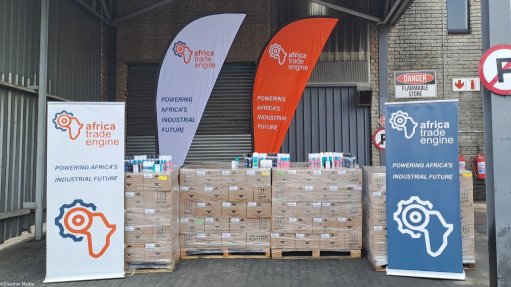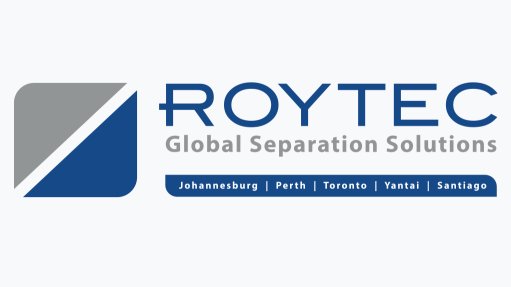Why Africa needs collaborative funding value chains to drive intra-continental trade
This article has been supplied and will be available for a limited time only on this website.
By: Bohani Hlungwane - Interim Managing Executive: Transactional Banking, Absa CIB
As a Ugandan coffee trader, the five bordering African countries – Kenya, Tanzania, Rwanda, the Democratic Republic of Congo (DRC), and South Sudan – offer opportune access to over 250 million people. Despite the geographical advantage of these potential export markets, historical barriers constrained the growth of trade between these neighbours.
Inadequate transport infrastructure, logistical challenges, trade policy issues, currency convertibility, and political instability are some of the factors that prevented high volumes of Ugandan coffee from crossing borders. For Uganda’s exporters, it was often more lucrative to send produce to the other side of the world than to adjacent markets.
For Africa’s small to medium-sized enterprises and informal traders, the barriers to trade across borders are even more pronounced. In addition to challenges that larger exporters face, a lack of funding, complex regulatory standards and high tariffs, limited foreign market information, and payment challenges exacerbate a difficult trading environment.
The implementation and operationalisation of the African Continental Free Trade Area (AfCFTA) in January 2021 set out to change this. By facilitating Africa to trade more effectively with itself, this framework aims to significantly increase trade within the continent above the current 14%. However, AfCFTA’s success greatly depends on Africa’s SMEs advancing the continent’s cross-border export potential of $22 billion.
While this growth trajectory is encouraging, a borderless trade eco-system can only be built upon practical solutions that solve real-world challenges. To create a future of borderless trade, however, the current groundswell created by the G20 Presidency must be effectively harnessed. Africa’s task now is to translate trading protocols into concrete implementations that capture and realise its exponential economic opportunities.
The starting point must be Africa’s SMEs and improving their access to funding. Currently, a trade finance gap of more than $100 billion annually exists – a shortfall that disproportionately constrains small and medium-sized enterprises (SMEs) and informal traders.
Government agencies, development finance institutions (DFI’s), commercial banks, and fintechs must form collaborative partnerships aimed at linking SMEs in the trade eco-system with growth capital. By forming these funding value chains, each role player can ensure SMEs move more successfully through the funding process.
One of the first major enablers are commercial banks. They provide a tried-and-tested solve for the due diligence process, the first step towards securing funding. Commercial banks excel at following established due diligence and KYC (know your customer) processes to onboard business customers. This ensures that capital is utilised in a sustainable way and results in the highest returns.
Another crucial area where commercial banks can take a lead is information. Without a solid track record, SMEs with growth potential are often denied access to funding – not due to commercial viability but simply a lack of information. Simultaneously, SMEs need to access to information funding pools, trade routes, and tariffs under the AfCFTA agreement to position themselves more strategically to access pools of liquidity.
By acting as an information highway between SMEs and other role players in the funding value chain, commercial banks can identify the most critical areas where information must be gathered, processed, and channelled to. Working with fintechs, for example, could further simplify access to information, improve KYC processes, and provide agile tech-based solutions that help entrepreneurs understand trade and financing protocols. An opportunity also exists for commercial banks and fintechs to gather and interpret SMEs’ financial behaviour data into credit data, which would remove a significant pain point.
Once commercial banks have completed the due diligence process, the outcome would determine the next role player in the funding ecosystem. African SMEs that require alternative funding solutions would be linked to government agencies or DFI’s. For example, a country’s Department of Trade and Industry may have specialised subsidies, or credit guarantees in favour of women-led businesses to drive inclusion. In isolation, these SMEs might not receive access to funding from one financial entity, but funding value chains remove that entry barrier.
When possible, commercial banks should set African SMEs up for long-term success by prioritising funding pools from African DFIs, who have a better understanding of the constraints and challenges of the continent’s business and trade landscape. The reality is that European SMEs have different resources available to them than African SMEs, which form a critical backdrop when it comes to funding.
Fintech also have an important role in the funding value chain. A borderless trade network will require innovative technology solutions to simplify various funding challenges, such as access to additional behavioural data, fraud detection, mobile payments, and linking SMEs to other financing pools.
If every role player can start to view themselves as part of a funding value chain, Africa can move beyond this juxtaposition between future possibilities and past frustrations.
Because the benefits are indisputable: the World Bank estimates that the AfCFTA could lift 50 million Africans out of extreme poverty within the next 10 years by generating economic value across the continent’s supply chain.
Borderless intra-continental trade can be the economic accelerator Africa has been searching for. If the continent’s financial role players can remove the corporate and competitive borders between them to advance intra-continental trade, then collaborative funding value chains can become true advocates for SME growth.
Article Enquiry
Email Article
Save Article
Feedback
To advertise email advertising@creamermedia.co.za or click here
Comments
Press Office
Announcements
What's On
Subscribe to improve your user experience...
Option 1 (equivalent of R125 a month):
Receive a weekly copy of Creamer Media's Engineering News & Mining Weekly magazine
(print copy for those in South Africa and e-magazine for those outside of South Africa)
Receive daily email newsletters
Access to full search results
Access archive of magazine back copies
Access to Projects in Progress
Access to ONE Research Report of your choice in PDF format
Option 2 (equivalent of R375 a month):
All benefits from Option 1
PLUS
Access to Creamer Media's Research Channel Africa for ALL Research Reports, in PDF format, on various industrial and mining sectors
including Electricity; Water; Energy Transition; Hydrogen; Roads, Rail and Ports; Coal; Gold; Platinum; Battery Metals; etc.
Already a subscriber?
Forgotten your password?
Receive weekly copy of Creamer Media's Engineering News & Mining Weekly magazine (print copy for those in South Africa and e-magazine for those outside of South Africa)
➕
Recieve daily email newsletters
➕
Access to full search results
➕
Access archive of magazine back copies
➕
Access to Projects in Progress
➕
Access to ONE Research Report of your choice in PDF format
RESEARCH CHANNEL AFRICA
R4500 (equivalent of R375 a month)
SUBSCRIBEAll benefits from Option 1
➕
Access to Creamer Media's Research Channel Africa for ALL Research Reports on various industrial and mining sectors, in PDF format, including on:
Electricity
➕
Water
➕
Energy Transition
➕
Hydrogen
➕
Roads, Rail and Ports
➕
Coal
➕
Gold
➕
Platinum
➕
Battery Metals
➕
etc.
Receive all benefits from Option 1 or Option 2 delivered to numerous people at your company
➕
Multiple User names and Passwords for simultaneous log-ins
➕
Intranet integration access to all in your organisation

















